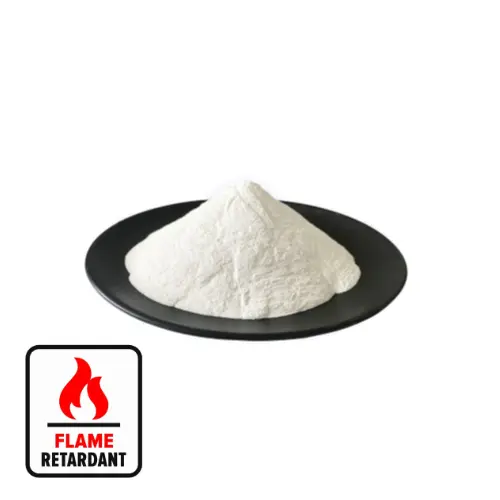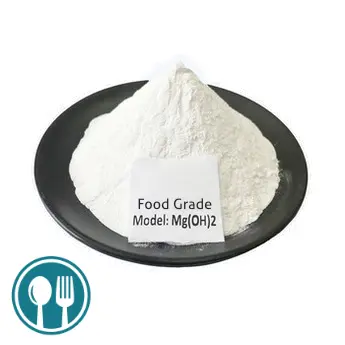Preparation method of nano magnesium hydroxide
Characteristics: the operation process is simple, and the nano-magnesium hydroxide powders with different morphologies such as flake, needle and sphere can be produced by controlling the reaction conditions. However, the nano-magnesium hydroxide prepared by this method may have agglomeration phenomenon, and the cost of using sodium hydroxide method is relatively high, and the ammonia method of preparation is easy to cause environmental pollution.
2, Uniform precipitation method:
Principle: Instead of adding the precipitant directly, a certain substance is added to the solution so that it reacts chemically with water or other substances to generate a precipitant, which is generated uniformly throughout the solution so that the reaction proceeds uniformly in the solution. Generally use urea and soluble magnesium salt reaction, that is, CO(NH2)2 + 3H2O → 2NH4OH + CO2, Mg2+ + 2NH4OH → 2NH4+ + Mg(OH)2.
Characteristics: high purity of the prepared product, uniform particle size distribution, the process is easy to operate and control, but the yield is relatively low.
3, Reverse precipitation method:
Principle: add the salt solution to the alkaline precipitant, so that the reaction system is always in the alkaline range, so that the surface of the magnesium hydroxide particles is always negatively charged, effectively avoiding the generation of agglomerates, can be obtained in small particle size, uniform distribution of nano-magnesium hydroxide particles.
4, Full back mixing homogenization emulsification method:
Principle: Liquid-liquid phase precipitation reaction is realized in the full re-mixing homogeneous emulsifier. Under the high-speed drive of the motor, the reaction material is added to the rotor and subjected to many times of shear action in an instant, forming a fine liquid film unit, precipitation reaction is carried out on these tiny units.
Characteristics: It can make the crystallization of Mg(OH)2 particles complete and the particle size distribution more uniform, but the operation is more complicated, the whole reaction process lasts for a long time, which increases the preparation cost.
5, Precipitation – azeotropic distillation:
Principle: first synthesize magnesium hydroxide by chemical precipitation method at room temperature and pressure, after settling and washing, the filter cake obtained is mixed with a specific solvent (such as n-butanol and other alcohols) to make a slurry, and then heated to raise the temperature of the solvent and water in the slurry formed by azeotropic evaporation, and then continue to raise the temperature of the solvent to the boiling point of the solvent evaporated solvent, so as to obtain nano-scale magnesium hydroxide powders.
Characteristics: able to synthesize uniformly dispersed nano magnesium hydroxide powder, can effectively remove the water in the magnesium hydroxide colloid, to overcome the generation of hard agglomerates, but n-butanol will cause a certain amount of pollution to the environment and recycling trouble.
6, Hydrothermal method:
Principle: Use water as solvent, pour the raw materials into a closed container, control a certain temperature and pressure (temperature is generally between the boiling point of water and the supercritical temperature, the pressure is generally 1 – 22 atmospheres) to carry out the chemical reaction. Usually the magnesium hydroxide synthesized at room temperature is hydrothermally modified. In the high temperature and high pressure water solution, the magnesium hydroxide undergoes the process of dissolution, recoalescence, and recrystallization to generate magnesium hydroxide with the required specific structure and morphology.
Characteristics: can be obtained crystal particles larger, smaller specific surface area, stable structure, agglomeration phenomenon significantly improved special crystal type of magnesium hydroxide, but the hydrothermal method requires high conditions, expensive equipment, is not conducive to industrialized production.
Drying kinetics of nano magnesium hydroxide
Drying curves and drying rate curves: The drying curves and drying rate curves of magnesium hydroxide nanoparticles can be obtained through drying experiments. It is found that the drying curves and drying rate curves of magnesium hydroxide nanoparticles with different preparation methods or different morphologies (e.g. nanoparticles, nanorods, nanosheets, etc.) have similar shapes, but the specific drying rate and drying time and other parameters will be different.
Drying model: Researchers usually choose a suitable drying model to describe the drying process of magnesium hydroxide nanoparticles. For example, a study chose the logarithmic model as the thin-layer drying model of nanoscale magnesium hydroxide, which can better describe the drying curve of nanoscale magnesium hydroxide.
Diffusion activation energy: Through the analysis of drying kinetic data, the diffusion activation energy of water in the wet material of nano magnesium hydroxide can be calculated. The diffusion activation energies of nano magnesium hydroxide with different morphologies are different, which reflects their different degrees of difficulty of moisture diffusion in the drying process. For example, the activation energies of water diffusion in the wet materials of monodisperse magnesium hydroxide nanoparticles, magnesium hydroxide nanorods and magnesium hydroxide nanosheets were obtained to be 26.5 kJ/mol, 25.3 kJ/mol, and 21.5 kJ/mol, respectively.
Drying kinetic mechanism function: by processing the drying experimental data through thermal analysis kinetics and other methods, the drying kinetic mechanism function of magnesium hydroxide nanorods can be obtained, which is able to describe the relationship between the moisture content and the drying time, temperature and other factors in the drying process.


